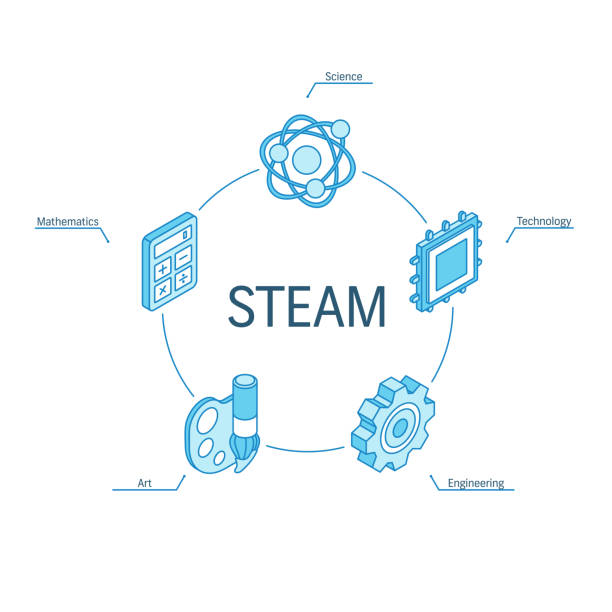THINGS TO CONSIDER WHEN CHOOSING A PRIMARY SCHOOL
Step 1: Understand Your Child's and Family's Needs and Abilities
Entering first grade means children must adapt to the structure and discipline of learning and activities, as they are no longer free to play whenever they want. This phase is foundational for building a future for your child. Therefore, choosing a suitable primary school is a top priority for parents.
In reality, many parents want their children to attend top schools that meet high standards. However, whether the environment truly suits your child's needs is what really matters. Each child has unique strengths and abilities, as well as different needs and desires. Thus, choosing the right environment will help your child reach their maximum potential.
- Does your child excel in talents or academics?
- Does your child enjoy a creative, fun, and diverse learning environment?
- Can your child handle the pressure of comprehensive learning (extra-curricular activities, cultural studies, etc.)?
Additionally, whether spoken or not, financial matters remain an important consideration in choosing a school. Parents should carefully calculate long-term plans to ensure budgeting for their child's education throughout their school years. Parents should avoid mid-term transfers that disrupt the learning rhythm and familiarity. Changing environments can create significant psychological pressure for children in their early years.
Step 2: Define Criteria for Choosing a Primary School
Below are criteria that parents can consider when choosing a primary school for their child. Parents should prioritize these criteria based on the family's needs and abilities.
Educational Philosophy
Every family has unique expectations for their children. Therefore, defining an educational direction for your child is crucial for their sustainable and comprehensive development. Choosing an educational direction is also a criterion many parents advise considering when selecting a school.
- Does the school focus on overall development or collective achievements?
- Does the educational philosophy lean towards tradition or modern creativity and innovation?
- What is the school's future vision, and does it align with the parents' direction?
Geographical Location
Based on the experience of many parents in choosing primary schools for their children, geographical location should be a primary criterion, especially for those just starting first grade. Choosing a school close to home or parents' workplace offers benefits such as convenient commute, minimal disruption to the child's routine and health. In case of sudden issues like illness or fever, parents can also handle these situations more easily. However, nowadays many schools provide transportation services, which also serve as an important factor in selecting schools far from home to ease commuting concerns for families.
Educational Program
An advanced educational program with unsuitable methods can hinder a child's learning. While theoretical knowledge from books is important, methods that facilitate comprehension and practical application are more crucial. Therefore, the teaching program depends on activities, teaching methods in the classroom, making lessons engaging and knowledge retention longer.
Learning Environment
The learning environment is a vital factor parents should consider when choosing a primary school.
- Safety and Wellness: Children need to feel safe both mentally and physically, without bullying or safety issues, proper food hygiene, cultural materials aligned with ethical standards.
- Familiar, Friendly, and Positive: Children need comprehensive education, respect, and personal development. Positive energy, friendliness from peers, and warmth from teachers contribute to the development of creative thinking.
Physical Facilities
Meeting facility standards is also a necessary factor when choosing a school. Currently, some schools do not provide adequate facilities for students, which can limit their development. Simple things like lacking practical tools can make it hard for a child to understand lessons and develop their knowledge. Additionally, lighting, sound, and architectural design directly impact a child's development.
Step 3: Research and Compare Suitable Schools for Your Child and Family
With the development of technology, parents can easily gather information through various channels, such as official websites, social media platforms like Facebook and Instagram, newspapers, and more.
A reliable source of information that parents shouldn't overlook is friends and relatives who have children studying at different schools and have specific opinions about the quality and education methods of those schools.
For a more precise and firsthand perspective, parents should plan to visit schools directly. Visits will offer reassurance and a better understanding of the school, including educational programs, learning environments, and facilities. Schools often organize information sessions, trial classes, and workshops to help families learn more about them. This is also a chance for parents to interact and converse with the school's administration and teaching staff.
Step 4: Make Your Decision
There is no one-size-fits-all method for choosing a school suitable for every family. Parents should establish the criteria and primary concerns to evaluate and reference various sources. Additionally, parents can directly ask their child's opinion – whether they feel comfortable and compatible with the environment, teachers, and peers. From there, the family can make the most fitting decision.
True North School hopes that these shared insights will assist parents in determining and selecting the appropriate learning environment for their child.
Understanding the desires and aspirations of parents seeking a reputable environment that helps their child explore and develop comprehensively, True North School's pioneering approach focuses on Mentorship.
With 4 pillars of education: Character Development, Academic Rigor, Global Citizenry, and Wellness, True North School believes that each student possesses unique potential. The school's mission is to help children discover themselves and lay the foundation for sustainable development.

The AP Program and AP exams are designed by the College Board, allowing students to work on college-level coursework while still in high school. As the first school in Vietnam to offer AP courses starting in Grade 9, True North School’s mission is to prioritize Academic Rigor as one of our 4 Pillars of Excellence.

With exciting contests such as ”Young writer inside you”, ‘My favorite character’, ‘Book cover design’, ‘Ring the golden bell’… TNS students have had a great time with books. through the first ever BOOK FESTIVAL at True North School. ESPECIALLY, poet Tran Dang Khoa, a great poet of Vietnamese children, appeared and held a fan sign

Many schools are aiming to incorporate the STEAM approach into the curriculum nowadays. With the addition of the A (Art) element, experts believe that education through arts makes learning more engaging for children.

Getting accepted into one of the Ivy League universities is a dream for many Vietnamese students. According to U.S News statistics, the acceptance rate for Ivy League schools is around 7%. What makes these institutions prestigious and highly sought after? In this article, let's explore the top 3 Ivy League universities on the wish list of Vietnamese students.

The AP Program and AP exams are designed by the College Board, allowing students to work on college-level coursework while still in high school. As the first school in Vietnam to offer AP courses starting in Grade 9, True North School’s mission is to prioritize Academic Rigor as one of our 4 Pillars of Excellence.

With exciting contests such as ”Young writer inside you”, ‘My favorite character’, ‘Book cover design’, ‘Ring the golden bell’… TNS students have had a great time with books. through the first ever BOOK FESTIVAL at True North School. ESPECIALLY, poet Tran Dang Khoa, a great poet of Vietnamese children, appeared and held a fan sign

Many schools are aiming to incorporate the STEAM approach into the curriculum nowadays. With the addition of the A (Art) element, experts believe that education through arts makes learning more engaging for children.

Getting accepted into one of the Ivy League universities is a dream for many Vietnamese students. According to U.S News statistics, the acceptance rate for Ivy League schools is around 7%. What makes these institutions prestigious and highly sought after? In this article, let's explore the top 3 Ivy League universities on the wish list of Vietnamese students.




